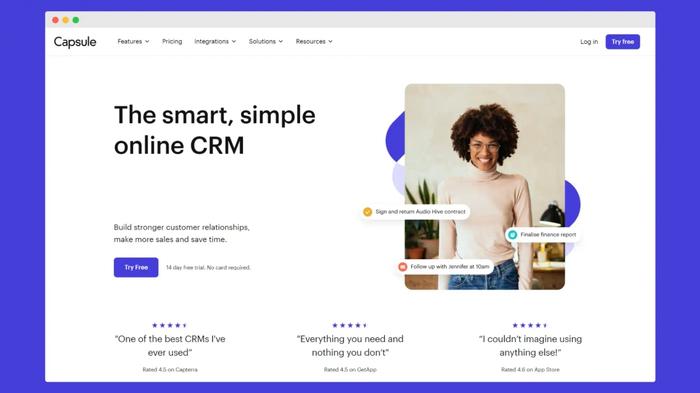Finding the right commission structure for sales can be tough. You want your team to be motivated to sell, but you also want them to feel like they’re being rewarded in a way that makes sense for your business.
With so many options and strategies available, picking one that’ll work for your team sounds like a challenge. Let’s examine the most popular sales commission structures and discover the best fit for numerous different businesses.
Commission structure for sales: what is it?
This is the system, a part of sales compensation, by which sales reps are paid. It ties the pay of a sales team directly to their performance or other business goals – there are many possible types of commission structures.
Some businesses give a percentage of the sale as a commission, while others offer a fixed amount per sale or use a tiered system where the commission rate goes up with higher sales volumes.
It gets more complex with factors like what's being sold, how much, or even the profit margins. That’s why there are so many different types of commission structures that are looked at in detail below.
10 types of sales commission structures
Here’s the most popular sales reward structures:
#1 - Product-based commissions
Sales reps earn money based on the products they sell. This type of sales commission structure is pretty straightforward: sell a product, earn commission.
Once you set up your commission structure to match these different products, your sales reps can focus on big-win items or the strategic products that need the extra push.
What businesses can benefit from it?
Product-based commissions are a great fit for sales teams whose products have varying values or profit margins.
#2 - Territory volume commission structure
Sales are linked to specific areas or territories. So, if you’ve got a rep working in a certain region, their commission is tied to how well they do there. Territory volume commission structures encourages reps to get to know their area and its clients.
These reps are the local go-to person for your products, and the commission structure rewards them for owning their region.
Also, this kind of commission can be mixed with other structures, like a basic salary or straight commission, for more balance.
What businesses can benefit from it?
It's a solid pick for sales teams that cover different geographical areas.
#3 - Profit-based commissions
The focus is on the bottom line – sales commissions are based on the profit margin of each sale. That means the more profitable the sale is, the greater the commission for your sales rep.
What businesses can benefit from it?
It's the go-to for any sales organization looking to align their team's efforts with the company's profitability.
#4 - Residual commission
Here, sales reps earn ongoing commission for sales they've already made. For example, each time a customer renews or continues their service, the rep who initially made that sale gets additional payments.
For the sales organization, residual commission creates a culture where every member of the sales team sees the value in building and maintaining customer relationships.
What businesses can benefit from it?
Businesses that value long-term customer relationships would benefit from the residual commission structure. For example, subscription services or ongoing client services, or organizations with low-churn rates.
#5 - Tiered-based commissions
In a tiered commission structure, sales team members have different levels to reach and their commissions increase as they do so. This setup works great for giving sales reps clear, achievable targets.
The tiered sales commission structure outlines exactly what reps must do to move up a tier - and higher tiers result in greater payoffs.
A tiered commission structure drives the whole sales organization forward. It gives reps something to aspire for, with each step representing a new level of personal achievement.
What businesses can benefit from it?
It’s one of the most suitable sales commission structures for business areas in which a sales team can aspire to achieve more, like retail or software sales.
#6 - Performance-based commissions
Sales teams receive commission depending on how well they do their jobs. If they’re closing more deals, then reps will earn more commission.
If their contact list is growing, sales teams need to think about the management system to make it organized. This is where Capsule CRM comes in handy, making it easy to manage growing numbers of leads and helping reps close more deals to boost their earnings.

What businesses can benefit from it?
High-stakes corporate sales or dynamic B2B environments are ideal for this commission structure, as these are areas where sales reps influence deals.
#7 - Base salary plus commission
It combines the best of both worlds – a steady base salary that provides security plus a commission that works as a reward for extra effort and success.
In the base salary plus commission model, a sales rep earns a fixed base salary no matter what. Then, on top of that, they earn commission for the sales they make.
What businesses can benefit from it?
This sales commission structure model works great in situations where you want your team to focus on both winning new clients and gaining repeat business.
So, it’s suitable for dealerships, real estate agencies, and software companies with long-term subscriptions just to name a few.
#8 - Gross-margin commission structure
This sales commission is based on the profit that each sale brings in, not just the total sales amount. As such, it can motivate reps not necessarily to sell more but to sell smarter because they get a better idea of how their sales impact company profits.
What businesses can benefit from it?
Gross margin commission structures will work for businesses where profit margins differ between products or services. So, for example, electronics retailers or companies selling software and hardware solutions.
#9 - Draw against commission
In this system, sales professionals receive an advance, known as a 'draw', against their future commissions. In other words, reps earn a regular payment that is then balanced against the revenue generated from their sales.
If a rep’s sales performance leads to commissions that exceed the draw, they will gain the difference. However, if their commission levels don't cover the draw, reps could owe a balance depending on the policy.
Sales professionals in this commission structure therefore have a consistent income even if there are fluctuations in sales performance, which may be helpful during slow sales periods.
What businesses can benefit from it?
Businesses with longer sales cycles, like luxury goods, real estate, and B2B sales, that take longer to close deals may benefit from draw-against-commission models.
#10 - Revenue commission structure
Every dollar of revenue counts in this compensation structure. Sales professionals are motivated to close deals and generate revenue because their earnings depend on their success during the sales process.
What businesses can benefit from it?
Companies with simple sales setups, like retail stores or direct product sales, may benefit from this structure. It works well where it's easy to see how a sales rep's work leads to more sales and revenue.
💡 Realtors in the US earned an average commission of 5.46% in 2023.
Having read these 10 sales commission structures, you might be struggling to pick the right one. This next section will help you understand which is the best for your business model.
Sales commission structure: tips to choose the perfect one
01 - Consider your sales team's size and structure when choosing a commission plan
For a small team, a simple tiered commission structure where more sales mean higher rates may work. If you've got a big team or if they cover different areas, a territory volume commission could be the way to go.
Talk with your team or sales leaders and identify what would be best for you all.
Maybe a draw against commission for those longer sales cycles or gross-margin commission for big-profit deals?

02 - Match your commission setup with your sales goals and targets
Sync up your commission setup with where you want your sales numbers to go so that everyone is working towards the same goal.
For example, a team that is focused on boosting the number of sales should go for a structure that rewards sheer volume. But if the goal is landing high-value deals, a commission plan that favors larger, more profitable sales may be better.
03 - Keep it simple so your sales reps can understand it
You don't want your sales reps scratching their heads over complex calculations, right? The simpler, the better. A good compensation plan should be easy to understand but effective at driving sales.
A typical sales commission structure could offer a clear percentage of total sales or a tiered commission that steps up as sales targets are hit. Either way, avoid overcomplicating things with too many details – if your team understands how their efforts translate into earnings, it’s easier for them to stay motivated.
04 - Use the commission structure to encourage sales reps to sell more
When you have a system where selling more equates to higher commission, that encourages going the extra mile and surpassing sales goals.
It’s a great motivational boost that will be visible later on in overall performance. But first, make things clear – establish the guaranteed pay for achieving certain sales milestones or what the extra rewards for top performers will be.
05 - Get sales leaders on board when designing the commission structure
Sales leaders know their people best, so you can create a commission plan that's fair and really works with their input. Leaders’ practical know-how is, therefore, invaluable.
They can suggest the best targets to achieve or the right commission percentages to use. Also, managers may give greater support and encouragement for a commission plan that they take part in creating.
06 - Don't just set it and forget it – review regularly
Once you've got your sales commission structures up and running, monitor it. What works today might not be as effective tomorrow, which is why regular check-ups are a must.
As your sales process evolves, your commission plan might need a tweak here and there. New products, market shifts, or different sales strategies might all call for adjustments.
Your sales reps are a great source of feedback because they're using the system every day and can suggest improvements.
07 - Make your plan motivational to work in a team, not alone
Individual hard work is worth appreciating, but it’s when the whole team joins their efforts that the magic really happens in your sales organization.
A workplace buzzing with sales representatives sharing tips and encouraging each other is something that creates an atmosphere everyone wants to work in.
To get there, add some team-focused rewards into your sales commission structure.
08 - Adapt the structure to different roles within the sales team
Not all sales reps are in the same boat – some might be great at direct sales while others perform better with longer-term deals. That’s why you need to tailor the model to fit the different sales roles in your team.
Start with re-adapting your commission plan to reflect the different sales roles. Maybe the average sales commission rates could be higher for those closing quick deals and a bit more forgiving for those reps working on longer sales cycles.
Give it a try, and remember to make sure that each rep, no matter their role, sees a clear link between their work and the rewards. This really helps.
09 - Offer training and support to help sales reps maximize their earnings
For new sales reps, understanding the details of how commission works can make a difference. When reps know what they’ll gain, they’ll be more determined to succeed.
Also, guide on strategies to boost sales during each sales period – the company will earn more and sales talents can hone their skills. A good idea here is to organize training regularly and provide support resources to the sales team.
This shows how much you back your team and encourages sales reps to go above and beyond. The more they know the better they’ll perform, and that's a win for everyone.

Commission rate by industry
Commission rates really differ depending on the industry. For example:
- SaaS companies usually offer around 10% commission for subscription-based sales models
- In real estate and insurance, it’s about 5%-10%
- Advertising tends to pay a higher rate of around 15%
- Medical equipment manufacturers offer between 10% and 30%
- Apparel sticks to a 15% rate
- The automobile industry goes higher at 25%
- For travel, it's usually between 10% and 16%
- And in recruitment, the commission can jump to 20%-40%.
Now you know how to choose the right sales commission structure
And there you have it – figuring out sales commissions doesn't have to be a headache. With the right commission structure in place, business development could be far more rewarding for your sales team and your business.
The results of that could be, for example, gaining many more contacts and customers. (Tenuous, we know!)
And the next step here is to handle them efficiently, so try out Capsule CRM. Sign up for a 14-day free trial and watch your sales process become smoother.




